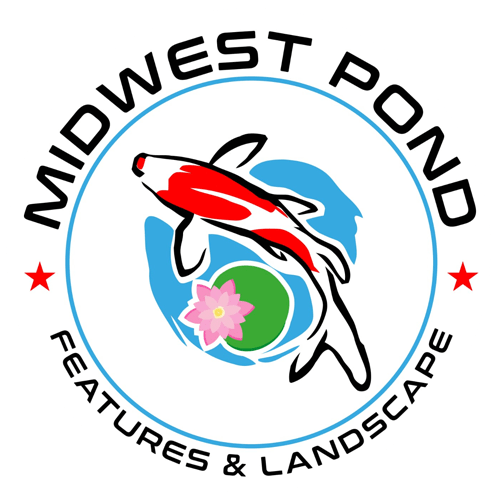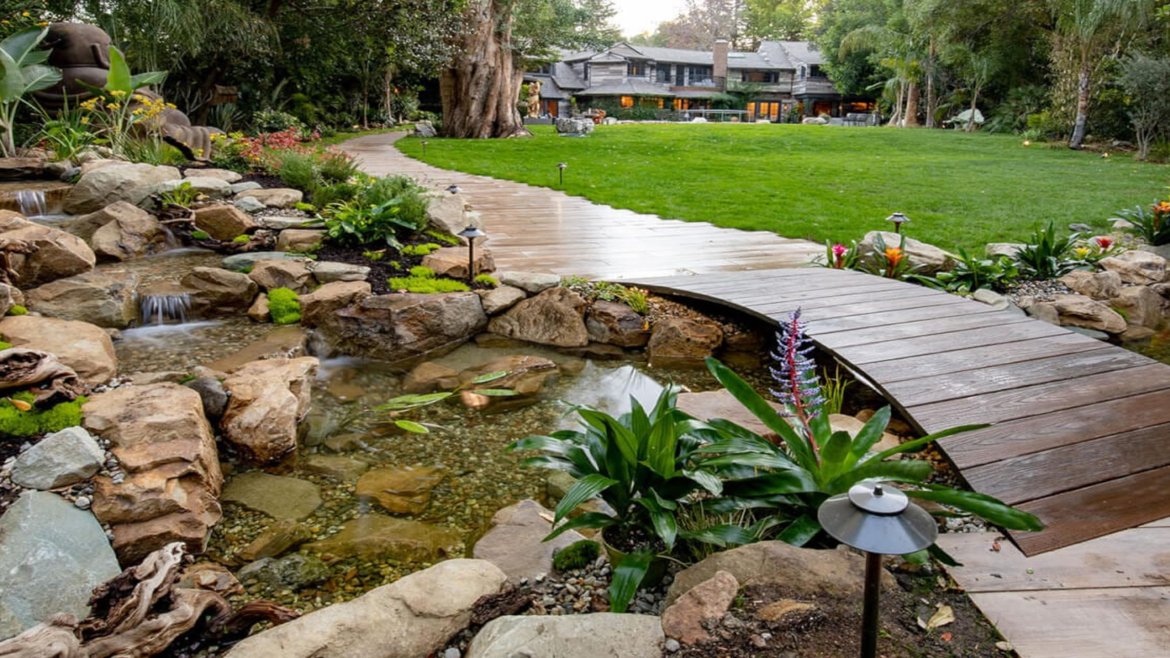Outdoor ponds are breathtakingly enjoyable and brings the backyard garden to life.
Whether you are an expert pond enthusiast or just starting this aquatic venture, knowing the dos and don’ts is essential for a beautiful water feature and pleasant space.
This blog will discuss the vital things that make an outdoor ponds succeed or fail.
The Do’s For Outdoor Ponds

Keep Yourself Informed
Discover new information about the pond and the animals and plants.Understanding how the pond works will help you make good decisions and solve problems better, leading to better growth for animals and plants.
Set A Regular Time For Meals
Feed the fish simultaneously daily and ensure they get the right amount of food without giving them too much. Overfeeding can cause problems with the water and stress the fish.
Follow the instructions for feeding the fish and monitor their behavior. Change the amount of food to keep them healthy and energetic if necessary.
Go With Bacterial Products For Pond Care
Aerobic bacteria are the keystone to a healthy pond ecosystem; some strains suppress algal growth by removing excess nutrients.
In addition, it stops breathtaking black and slimy sediments from becoming anaerobic, releasing toxic hydrogen sulfide into the pond, and helps prevent fish disease.
Adding bacteria is essential for a thriving ecosystem. Like all living things, bacteria have a limited life span. Once they are dead, they must be replaced.
Use The Hosepipe To Wash The Filters
We suggest using a hosepipe to wash filters rather than recirculation systems.
The chlorine that can be removed from tap water is only present as a tracer, and the amount left on the filter is so small that it will not significantly affect the bacteria in the pond.
When rinsing the filter in pond water, remove more bacteria and replace the pond water with clear water.
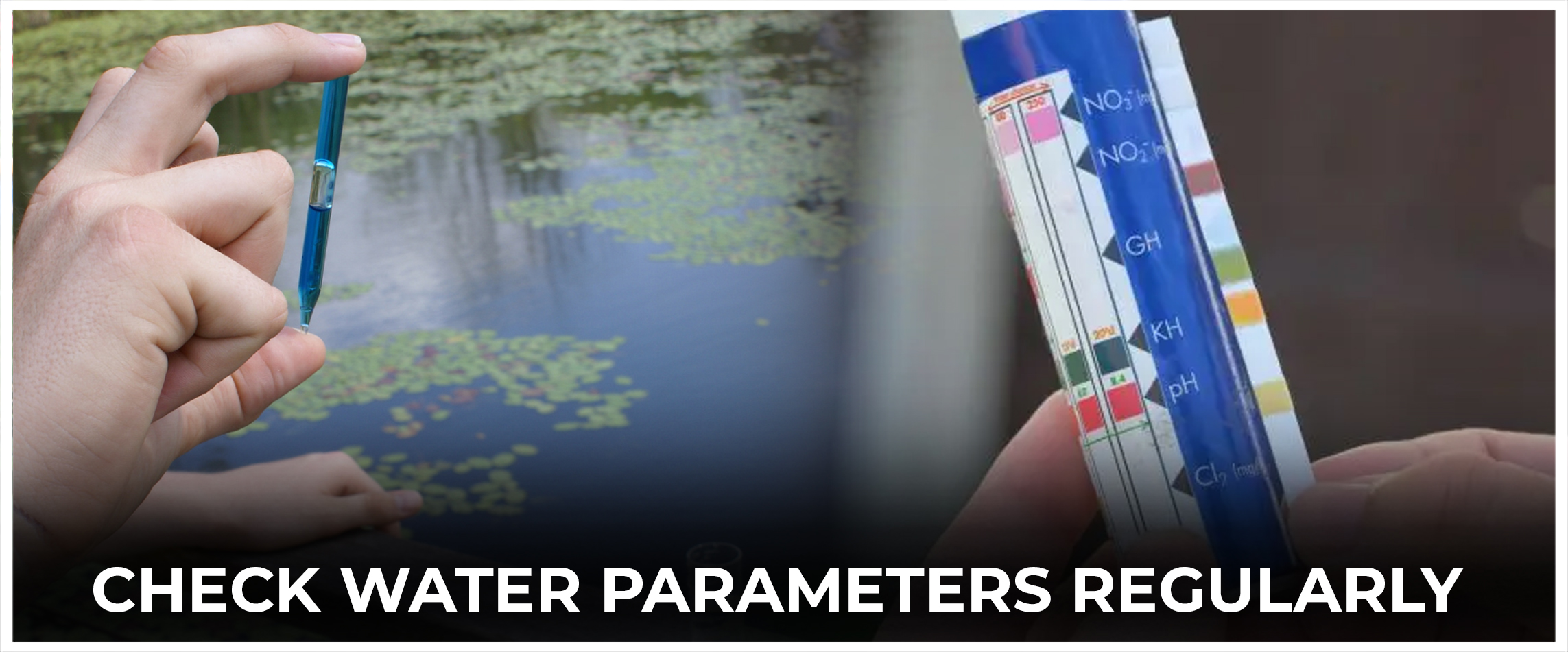
Check Water Parameters Regularly
However, clean-looking water may not be the healthful water the fish require. Check the water parameters every few weeks to ensure the pH, KH, ammonia, and other figures are perfect. Water quality can change quickly and can harm the fish a lot.
Make Sure Always To Have The Pumps And Filters Working
Many people with ponds think it’s best to turn off the pumps when it gets cold. However, this will cause problems that will be seen in spring.
Pieces of materials fall into ponds and break apart during the winter. If we don’t remove this debris, it will release too many nutrients into the water, which will cause algae growth when spring comes.
Ensure the pump and filter clean out the dirt and keep the water flowing.
Provide Fish An Adequate Place To Live
Add places to hide and stay safe in the pond, like rocks, plants, or exceptionally built homes. These places keep fish safe by stopping other animals from eating them and giving them a comfortable place to live. Having the right home for the pond animals helps them be happy and healthy.
Quarantine New Species
Keep new fish or plants separate to ensure their health before putting them in the pond. This helps prevent diseases or bugs from spreading to the new animals. Quarantine tanks help you monitor and fix any problems with new fish before putting them in the main pond.

Watch Out For Pests
Be alert and look for signs of bugs or harmful things like weeds and algae in the water. Check your pond often for any strange plants or animals and take action to get rid of pests.
Skimming Routine
Frequently clean the top of the pond to remove trash, leaves, and other natural debris. Use a net or skimmer to remove debris that can build up and rot in the water. Removing debris from the water helps keep it clear and makes the pond cleaner and healthier, which means the filtration system doesn’t have to work as hard.
Ask For Technical Advice
Whether you’re new to ponds or have extensive experience, getting advice on how to care for the outdoor ponds is a good idea. It will help ensure that it stays healthy and lasts a long time.
Midwest Pond Features and Landscape is your trusted partner in creating and sustaining the perfect outdoor aquatic haven. Contact us today, and let us transform the pond aspirations into a serene reality.
The Don’ts For Outdoor Ponds
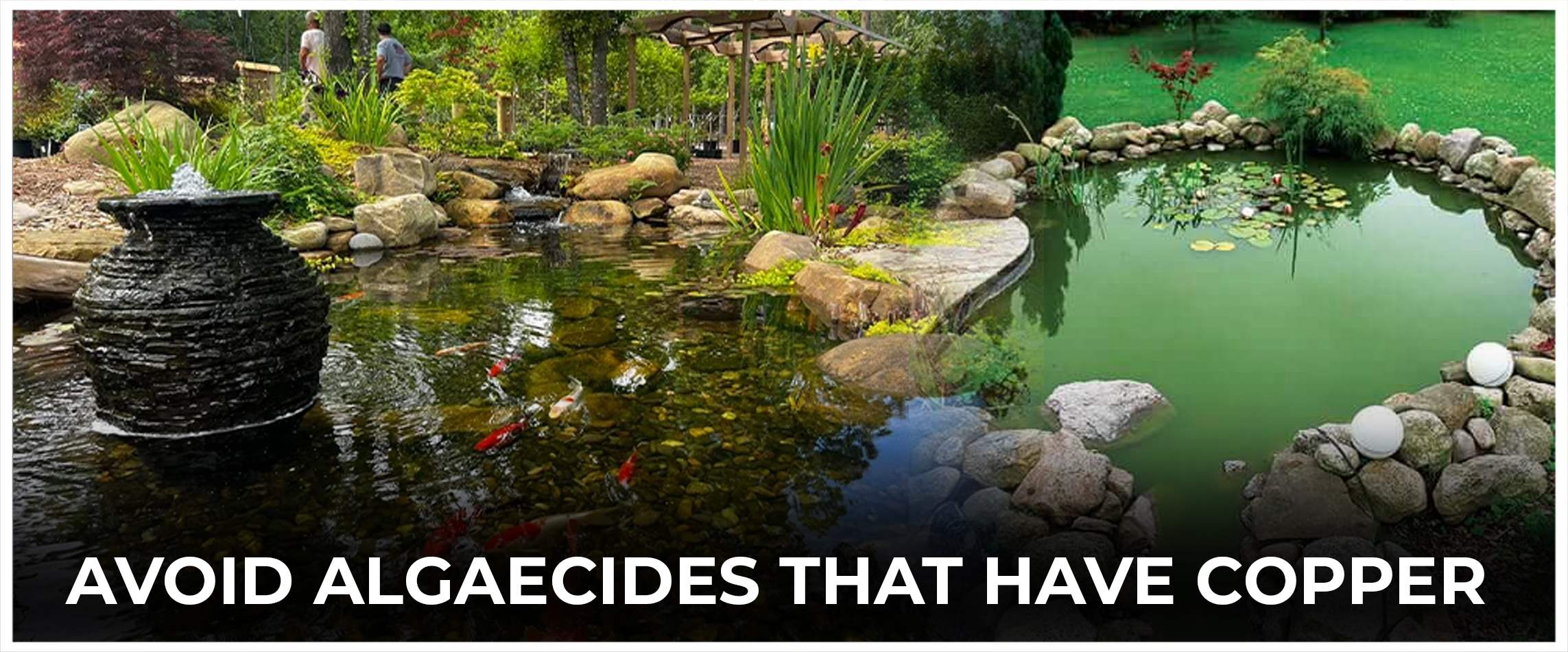
Avoid Algaecides That Have Copper
Copper-based algaecides might seem like a fast way to eliminate algae, but too much can harm algae, fish, and plants.
To keep the pond healthy, try different ways to control algae growth, such as adding good bacteria or changing the water’s nutrients.
Avoid Too Many Decorative Things
It might be tempting to decorate the pond with flowers and other decorations, but only put a few things in it. Too many decorations can make it hard to keep the pond clean because they trap dirt and make cleaning difficult. Find a balance between making the pond look nice and ensuring easy pond care.
Chemicals in Pond
Adding chemicals to the pond without knowing how they work can upset the natural balance of the environment. Be careful when using chemicals to treat algae, parasites, or other problems in the pond.
Don’t Forget To Add Shading For The Pond
Plants need sunlight to grow, but too much sunlight can cause algae to grow too much. Use shading, such as water lilies or floating plants, in the pond to keep the sun in check and keep the pond healthy.
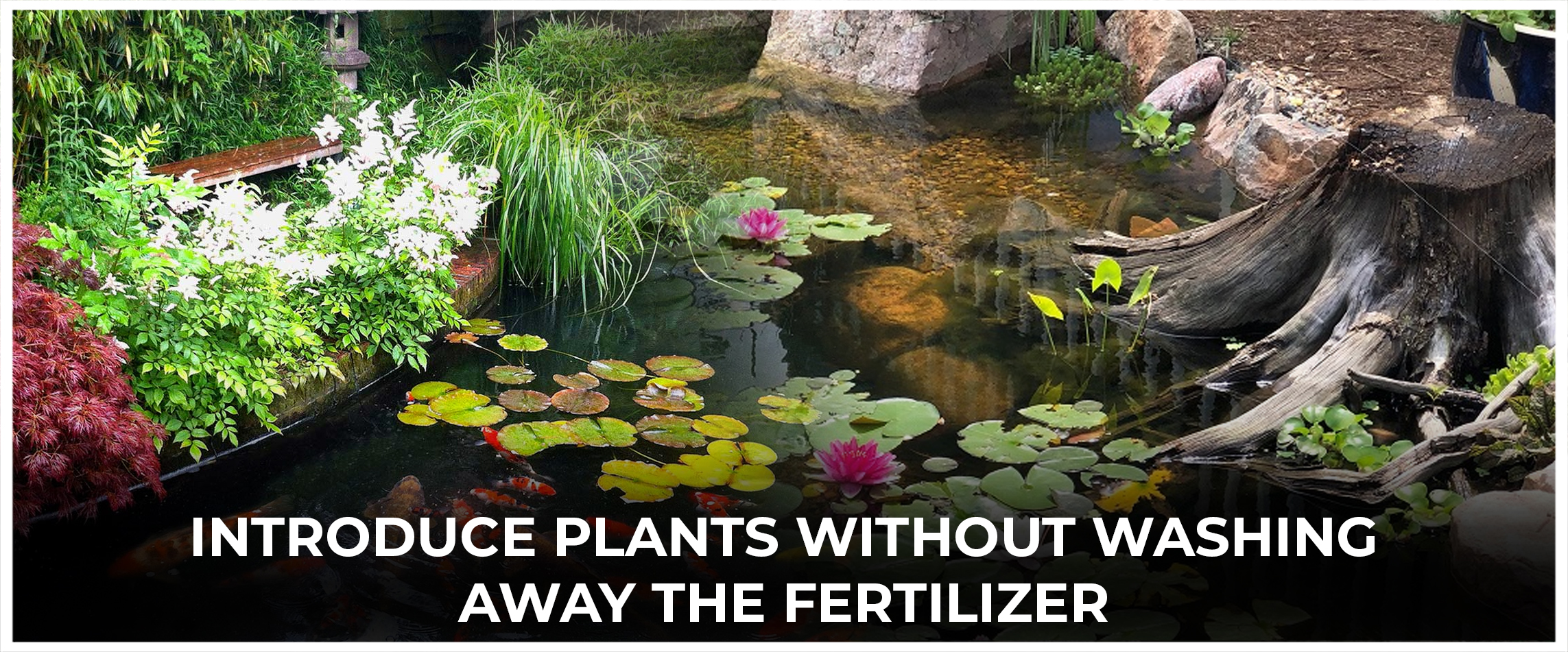
Introduce Plants Without Washing Away The Fertilizer
When introducing plants in the pond, the best place to buy them is at the garden store near the house. These plants are grown in fertilizers to make them grow faster, so the garden centers can sell them faster.
Don’t put these plants directly into the pond. The fertilizer will seep into the water and harm the helpful bacteria.
Soak the plants in water for 7-10 days and change the water daily. It will remove the fertilizer, and then it will be safe to put them in the pond.
Get Rid Of The Blanket Weed Before It Dies
When you see blanket weed in the pond, the first thing to do is remove it and throw it away. Try to eliminate it; it will come back soon and must start over again. Pulling out blanket weed while still alive can break it apart and make more spores in the water.
Give Fish Food In The Winter
When it gets colder in autumn, feed the fish high-protein food. When winter starts, don’t feed the fish at all.
During winter, fish don’t eat, so the food thrown into the pond will break down and release nutrients. When it gets warmer, this will feed algae growth in the pond.
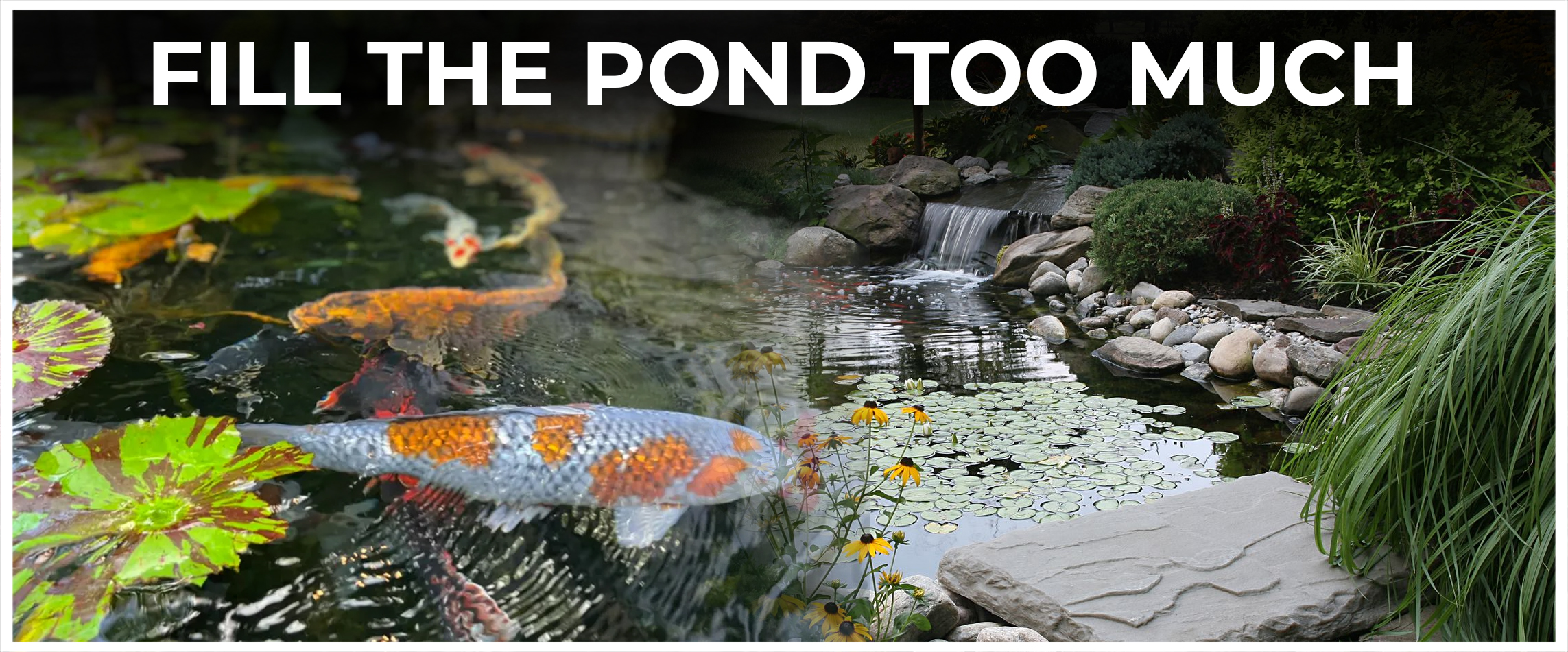
Fill The Pond Too Much
Putting too many fish in a outdoor ponds is effortless because no one wants a pond with only two fish to look at. But, if there are too many fish in a pond, it can make the water dirty.
Fish create a lot of waste. This waste makes ammonia, which can make the water in the pond too acidic and make the fish sick or die.
As a general guide, 55cm of fish for every 1,000 liters of water in a pond is suggested. Most fish in ponds in the UK are about 6 inches long. There would be 3-4 fish for every 1,000 liters of water.
Replace the Filters
The pond is dirty if the filters get dirty when using a bacterial product. Only clean the filters; don’t replace them.
Bacteria stick to the filters and eat any algae or muck that gets stuck. Swapping out the filters eliminates all the good bacteria in them. If you need to replace the filters, put a bacteria product on the new filters.
Make Sure To Keep An Eye On Temperature Changes For Outdoor Ponds
The water temperature in a outdoor ponds is essential for keeping the fish and other water animals healthy. Pay attention to temperature changes, especially during terrible weather.
Fish can get stressed when the temperature changes suddenly, which can mess up the balance of the pond’s ecosystem.
Check the water temperature often, and think about using a pond heater in the winter to keep a comfortable home for the fish and other water animals.
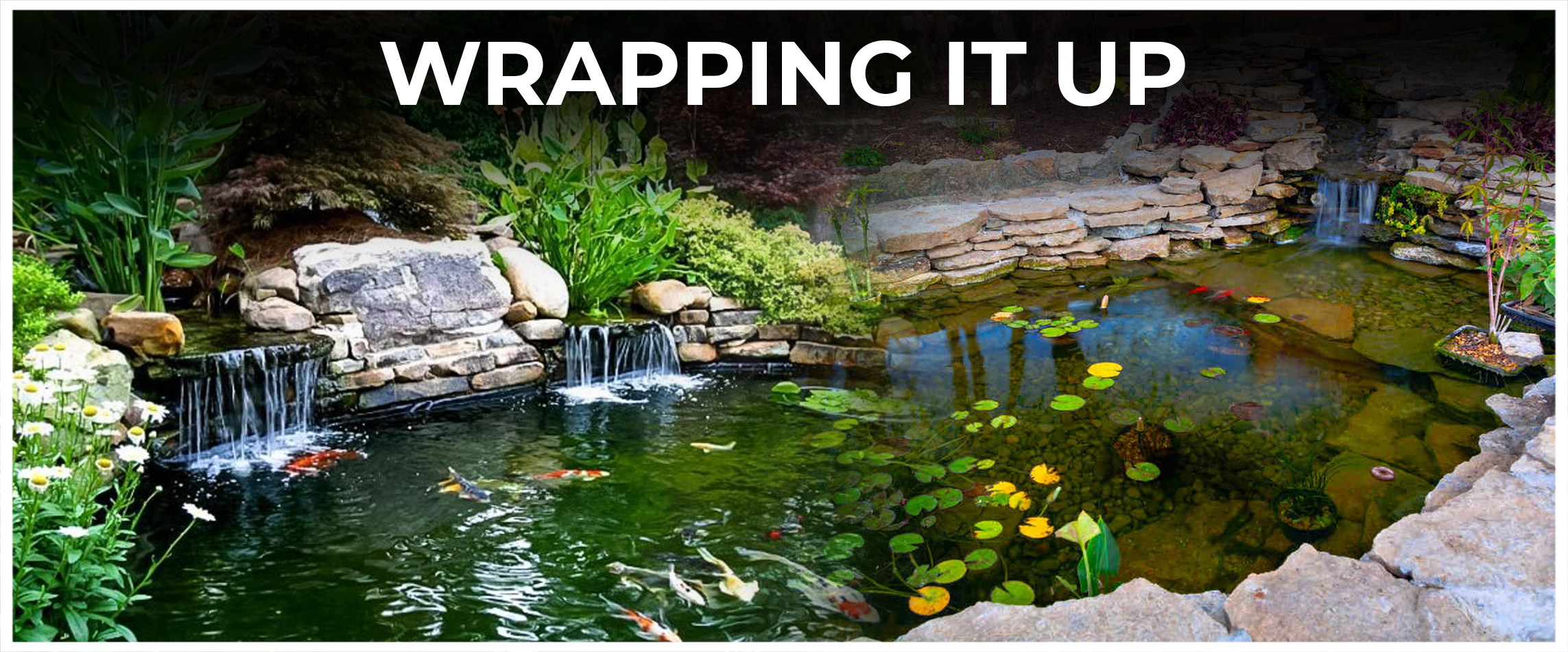
Wrapping it Up
Mastering the art of outdoor ponds involves a delicate balance of knowledge, care, and appreciation for nature. Adhering to the ten do’s and avoiding don’t pave the way for a harmonious and visually stunning aquatic haven.
A well-maintained pond is a picturesque addition to the landscape, a source of tranquility, and a connection with the natural world.
Enjoy the journey of pond ownership, revel in the soothing sounds of water, and witness the flourishing ecosystem you’ve carefully nurtured right in the backyard. May the outdoor ponds be an everlasting source of joy and serenity. Happy ponding!
